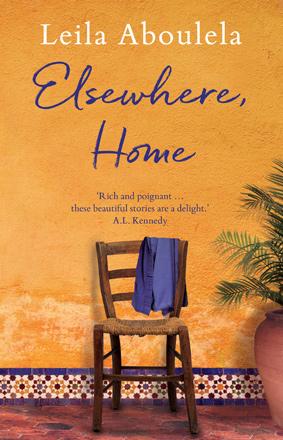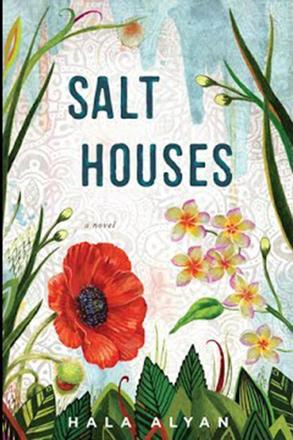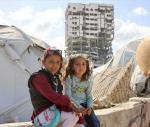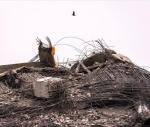You are here
Evoking the magic in everyday life
By Sally Bland - Sep 04,2016 - Last updated at Sep 04,2016
The Hidden Light of Objects
Mai Al-Nakib
Doha: Bloomsbury Qatar Foundation Publishing, 2014
Pp. 237
This collection of ten interlinking short stories is Kuwaiti author Mai Al Nakib’s first book. It is no surprise to learn that it won the Edinburgh International Book Festival’s 2014 First Book Award, for her writing is extraordinary. It would be inadequate (though not wrong) to describe her prose as lyrical. With singular word choice and unpredictable syntax, she creates situations and images that are both electrifying and evocative. One suspects it is not only her mastery of the writing craft, but her vision, her way of viewing human experience, that makes her prose so luminous, so full of emotional impact.
It is this evocative quality that connects the book title with the characters’ emotional lives — their memories, their impulses to live to the hilt, to love passionately, to write, which are often triggered by an innate object which takes on a life of its own. Evocation is Nakib’s strategy for illuminating the magic in the mundane, and for structuring the collection. Objects and characters appear and reappear in successive stories, from different angles or times, but always emotionally charged. Sometimes the connection is quite straightforward, like for the narrator of the first story who has collected objects since she was a child, concocting stories about them: “I don’t necessarily have to save, own, or touch the object. Spotting it, even fleetingly, is usually enough. But once in a while I stroke the object methodically, my fingers creating an invisible grid around it, then cradle it possessively in my arms to feel the story enter me directly.” (p. 7)
In other stories, the role of the object is more oblique. Sometimes, it creates an enigmatic aura of myth or legend, though the stories are all grounded in reality. In all cases, the objects denote emotional ties among people, even ones they may be unaware of. “Story objects are cobwebs across space and time. When you think it has never happened to anyone else ever before, a story object proves you wrong… Most people’s stories are hidden away. Objects may provide the only chance — unlikely, impossible though it may be — to unravel kept secrets”. (p. 10)
In “The Hidden Light of Objects,” many of Nakib’s characters dance on a precipice between exhilaration and despair, jumping to seize a moment of joy but always in danger of falling back into the morass of dullness or sorrow, “the hidden light” having eluded them, their dreams dashed. Some are children still full of wonder; others are teenagers seeking love or thrills at half-elicit, Western-style parties; still others are middle aged and saddled with regret. Many are outsiders due to having transgressing social norms, or striving so hard to escape the ordinary, or by virtue of events beyond their control.
Some don’t seem like outsiders at all, but they have a secret side, like Mina, a particularly bright, sensitive girl who stumbles into being a writer by recording random objects that attract her attention. “By the time Mina turned fourteen, the diary was her second skin, her life lived twice”. (p. 61)
She began to craft real and imaginary encounters; writing became essential for carving out the life she wanted for herself. “I must create a life to look back on, a life I can search for in the future… I must live my life then write about it. Or maybe I should write my life then live it.” (p. 64)
But she was “a young girl living at cross-purposes with a crusty society”. Chronicling her real perceptions, be they fact or fiction, presented her with an unsolvable dilemma. (p. 68)
Though politics is not the subject of these stories, it is the ever-present context, which Nakib obviously cares deeply about. Early on, she locates her stories “in our corner of the world, shattered in shards”. (p. 2)
There are frequent references to war, to smart bombs that target babies, to the pollution of burning oil that kills fish and causes cancer. A whole story is devoted to the pain of a family whose mother is kidnapped and imprisoned in Iraq at the end of the 1991 war, which is posited as a turning point in Kuwaiti lives. Another story highlights Kuwaitis’ (and by extension, Arabs’) conflicted relations with America, while two others centre on Palestinians who, contrary to most of the other characters, might crave a life of normality, but are caught in an endless cycle of violence.
The story behind the stories is the loss of innocence involved in Kuwait’s transition from a traditional desert society with a trading port open to the world, into an oil-driven economy where profit alone trumps tradition. Thus, modernity rushes ahead in material terms, while social change and personal freedom lag behind. “The Hidden Light of Objects” is a brave, powerful and original way of linking the personal with the political.
Related Articles
Salt HousesHala AlyanNew York: Mariner Books, 2018, 310 pp In “Salt Houses”, Palestinian-American author Hala Alyan follows four genera



















